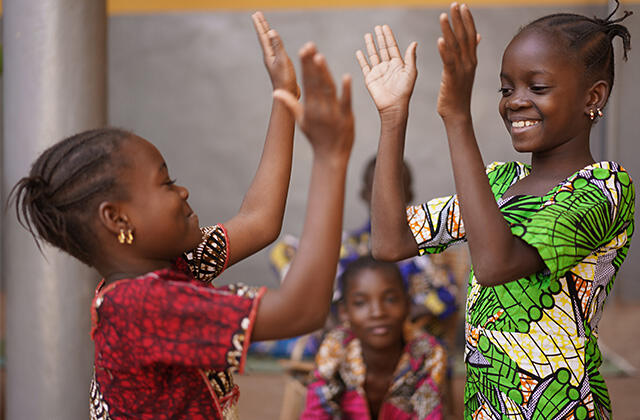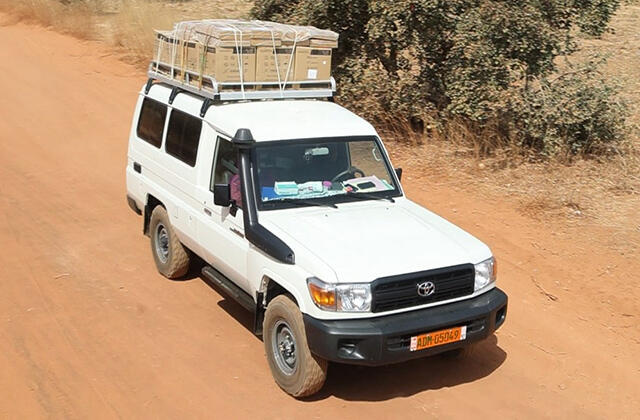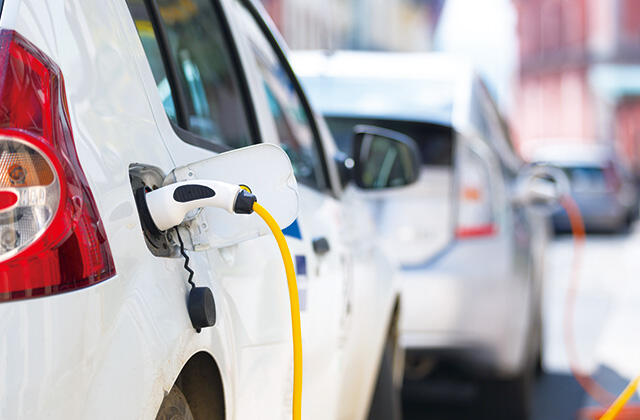Northern Hokkaido Project for the Future Making the Most of Abundant Wind Resources
The Toyota Tsusho Group, which operates a diverse range of renewable energy businesses, is involved in the expansion of wind power generation facilities and the development of transmission lines in the northern Hokkaido region. The entire Group is working together to accelerate initiatives toward carbon neutrality to passing on “A better global environment to the children of the future."
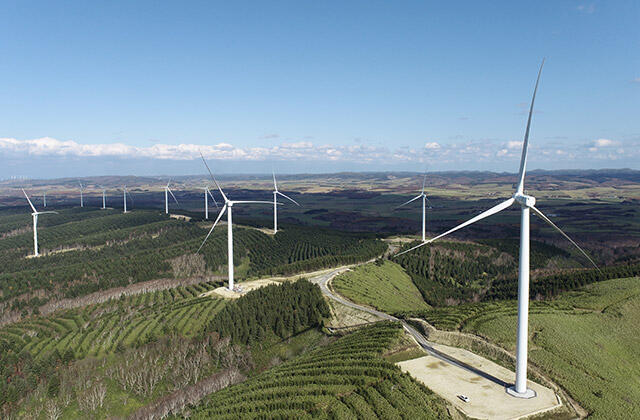
November, 2023
Significant Expansion of Renewable Energy by 2030 to Achieve Carbon Neutrality in Japan
In response to global warming and other global climate change issues, the Japanese government has declared that Japan will achieve carbon neutrality (CN) by 2050. CN refers to balancing emissions of carbon dioxide (CO2) and other greenhouse gases (GHGs) with the amount absorbed through afforestation and forest management to achieve virtually zero GHG emissions.
To achieve this goal, efforts to increase the production and use of renewable energy, which emits less CO2, are being accelerated in the industrial sector, which is on the side of GHG producers.
In F Y2021, Japan's power source mix was 71.7% thermal power from coal, LNG, and oil, 5.9% nuclear power, and 22.4% renewable energy from solar, hydroelectric, wind, and other sources. Of the renewable energy sources, 9.3% was solar, 7.8% was hydroelectric, 4.1% was biomass, 0.87% was wind, and 0.25% was geothermal.
Although the share of renewable energy has been increasing at a rate of 1–2% per year, the government has set a target to increase the share to 36–38% by 2030, which will require a further acceleration of the current deployment pace to meet the target.
For wind power generation, the government plans to expand significantly, indicating that wind power plays an important role in renewable energy.
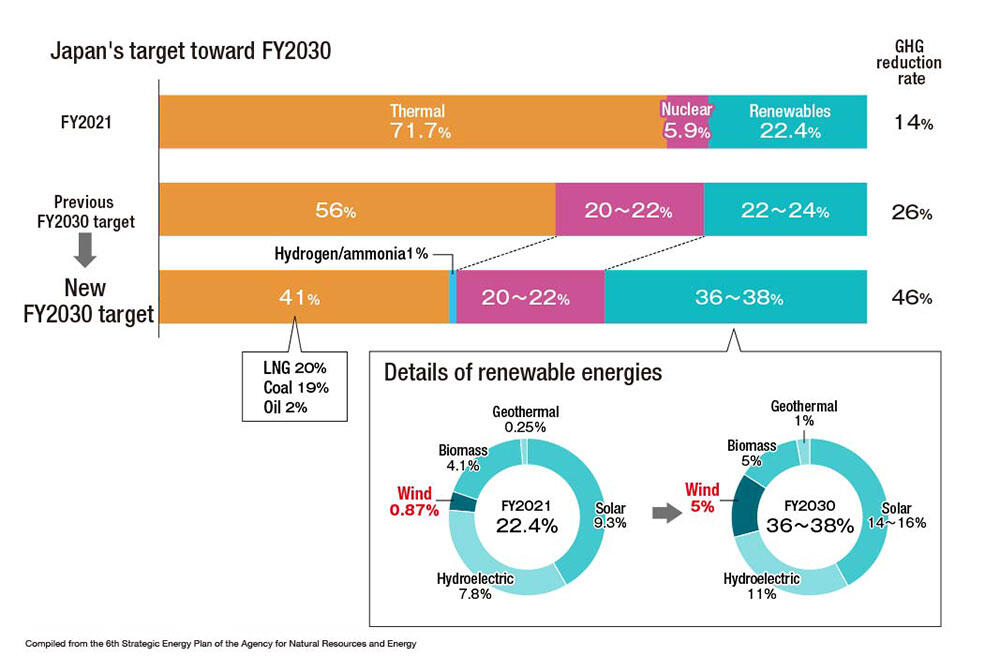
Toyota Tsusho Group Commitment to Achieving CN
The Toyota Tsusho Group is committed to achieving CN by 2050 under the slogan "A better global environment to the children of the future." We also plan to invest 1.6 trillion yen by 2030, about half of which, namely 700 billion yen, will be allocated to the renewable energy business.
The Group began its renewable energy efforts in the late 1980s, when concerns about global warming began to spread, and since then we have developed solar and wind power generation businesses in Japan and overseas. In recent years, we have accelerated these efforts by making Eurus Energy Holdings Corporation ("Eurus Energy") a wholly owned subsidiary in 2022 and SB Energy Corp. (now Terras Energy Corporation) a subsidiary in 2023.
Eurus Energy operates wind and solar power generation businesses in 15 countries and regions including Japan. It is the largest wind power producer in Japan, with a total power generation capacity using renewable energy of approximately 3,420 MW (3.42 GW) from wind and solar power combined as of March 31, 2023.
SB Energy is a company established by SoftBank Group Corp. in the wake of the Great East Japan Earthquake and is the largest solar power producer in Japan. Its total power generation capacity using renewable energy, mainly from solar power, is 823 MW (0.823 GW) in Japan and overseas.
In addition to these businesses, we plan to add biomass and small hydropower generation to our portfolio and, through concerted Group efforts, increase our power generation capacity using renewable energy from 3,600 MW (3.6 GW) in the fiscal year ended March 2022 to 5,000 MW (5 GW) in 2025 and over 10,000 MW (10 GW) in 2030.
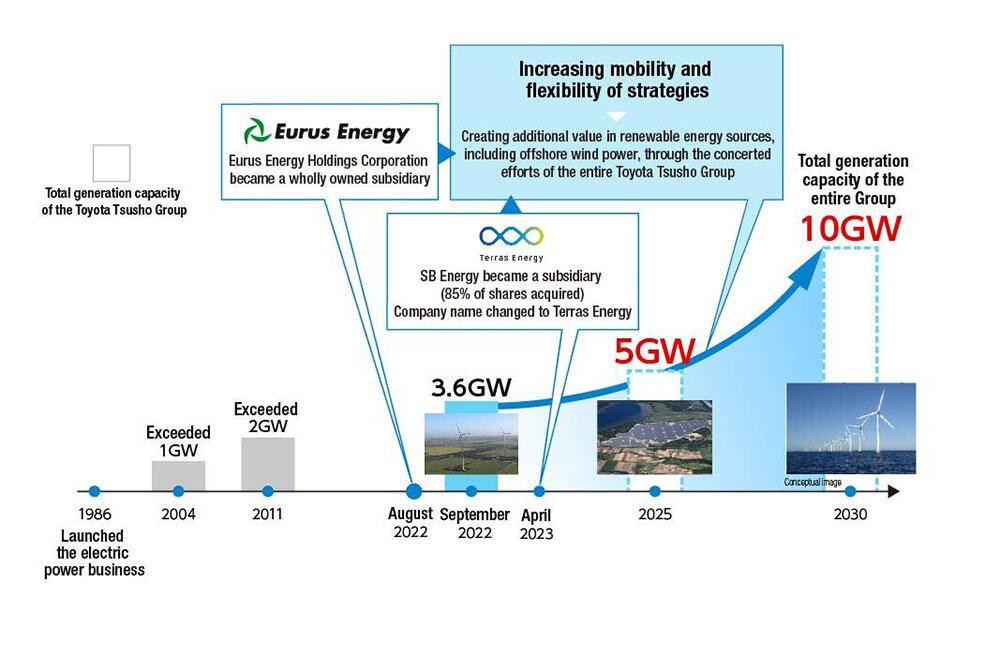
Beginning of the Renewable Energy Business
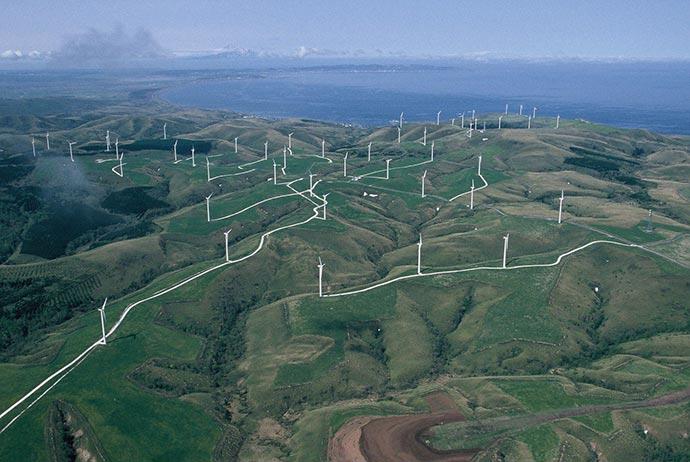
Eurus Energy's wind power generation business began in the United States in 1987 as the electric power business of Tomen Corporation (now Toyota Tsusho Corporation). Subsequently, the same business was started in the United Kingdom, Italy, and Spain.
In Japan, in response to government policies that created an environment in which wind power generation could be a viable business, the Eurus Tomamae Wind Farm began operation in Tomamae Town, one of the windiest areas in Hokkaido. Started in 1999, it was the Group's first wind power generation business in Japan. It was also the country's first large-scale wind power plant, called a "wind farm," and marked the beginning of the following introduction and expansion of renewable energy in Japan. Then, in Hokkaido, the Eurus Hamatonbetsu Wind Farm I began operation in 2001, followed by Eurus Soya misaki Wind Farm in 2005.
Challenging the Power Transmission Business in Northern Hokkaido in Cooperation with Local Communities
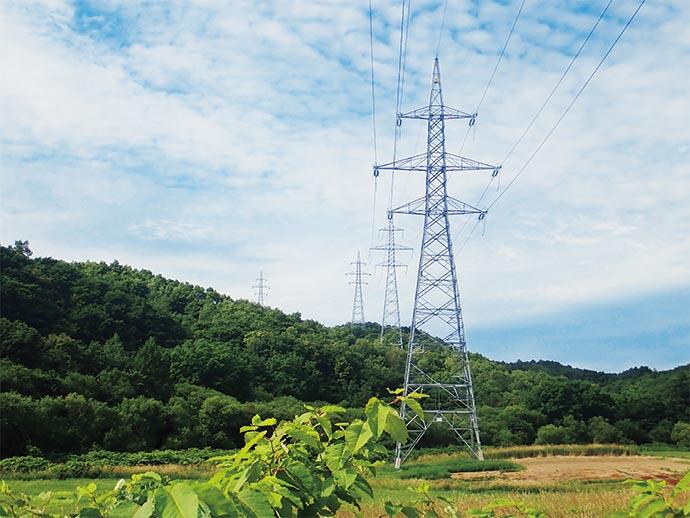


Capital: 1.95 billion yen
Shareholders: Eurus Energy and others
Number of employees: 13 (as of July 1, 2023)
Head office: 5-5-1, Suehiro, Wakkanai City, Hokkaido
The northern Hokkaido region satisfies natural conditions suitable for the wind power generation business. By fully utilizing this wind resource, Japan can make great strides in the domestic deployment of renewable energy.
However, there were two challenges that needed to be overcome to realize such progress.
The first challenge was the power transmission grid. Although northern Hokkaido is an ideal location for wind power generation, the weak transmission grid posed a challenge to the introduction and expansion of wind power.
In 2013, recognizing the challenges and potential for the expansion of renewable energy there, the government designated the northern Hokkaido region as a designated focus area for wind power development and publicly invited applicants to participate in a demonstration project to develop a transmission grid. This was a 10-year project to develop the transmission grid and demonstrate solutions to technical issues that would lead to the further introduction and expansion of wind power generation.
Believing that this demonstration project would lead to solutions to social and local issues, Eurus Energy established a new company for the power transmission business, North Hokkaido Wind Energy Transmission Corporation. The new company applied for and was selected as the power transmission operator for the demonstration project.
This transmission operating company, funded by companies other than Eurus Energy, local financial institutions, and other entities, was to begin work on developing the transmission grid in cooperation with local companies.
Another Challenge in Establishing the Project
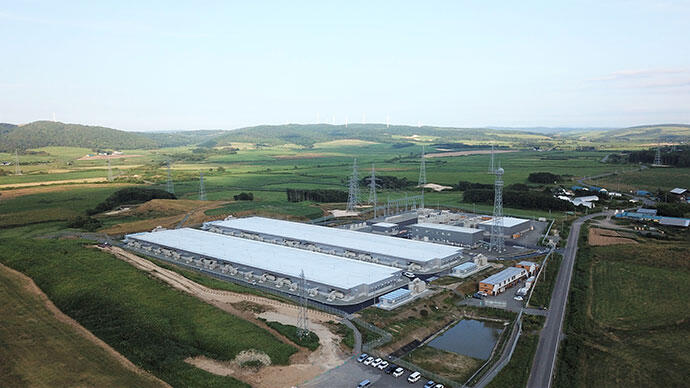
With the decision to develop the transmission grid, the prospect of effectively utilizing the wind resources in northern Hokkaido became clear. A detailed plan was also agreed upon to connect Wakkanai City to Nakagawa Town via a substation in Toyotomi Town with a 78 km transmission line spanning one city and four towns, and then to interconnect with the power grid of Hokkaido Electric Power Network, Inc. in Nakagawa Town.
But here we encountered our second challenge. Electricity demand and generation capacity must always be balanced, but the wind and solar power generation capacity is naturally affected by the weather. These renewable energy sources, also known as variable energy sources, could tip the balance between supply and demand too far.
To overcome this challenge, we decided to install an electricity storage system of lithium-ion storage batteries (240 MW / 720 MWh), the largest in Japan and one of the largest in the world, at a substation in Toyotomi Town. The purpose of this system is to control the electricity flowing into the transmission line by charging or discharging the electricity generated by wind power, thereby compensating for the weakness of wind power output, which is vulnerable to wind conditions and other factors, and mitigating fluctuations in the power generation capacity to be supplied to the power grid.
In this way, the large-scale transmission of electricity via a transmission line and the storage batteries for balancing supply and demand enabled us to establish a system that would contribute to the introduction and expansion of wind power generation in the northern Hokkaido region.
What We Can Do for the Children of the Future
Construction of the transmission line and the electricity storage system began in 2018 and was completed in 2023. At its peak, more than 600 people were involved in the construction, and the total project cost was 105 billion yen, including government subsidies.
Going forward, the transmission line will be connected to nine wind farms which will be built by Eurus Energy and other companies in Wakkanai City, Toyotomi Town, and Horonobe Town by 2025. When all of these wind power generation facilities are completed and connected, the total output will be 540 MW (0.54 GW). This is about as much wind power output as the entire island of Hokkaido has today.
In addition, to realize a wind power generation business that is rooted in the local community, Eurus Energy established the Community Development and Innovation Office in April 2023 (to be renamed the Community Development and Innovation Department in July) . It is named "Community Development" rather than "Community Contribution" because we want to not only contribute to the local community, but also develop together with the local community. The Group will continue to advance its renewable energy business, while envisioning the day when the future children of northern Hokkaido will be proud of the scenery of their hometowns with wind turbines.
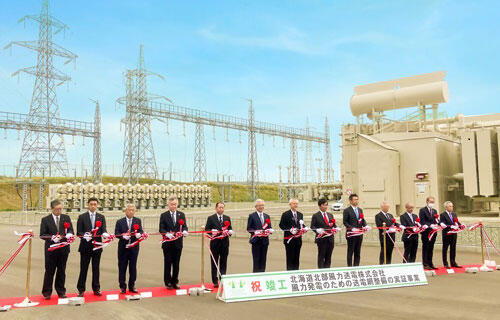
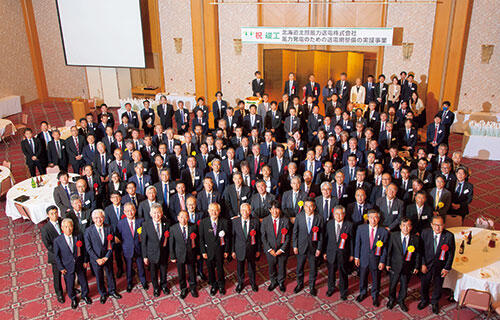
May 16, 2023: A construction completion ceremony was held in Toyotomi Town, followed by a ceremony in Wakkanai City
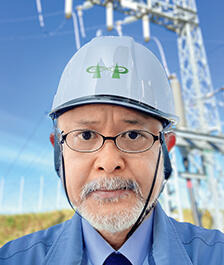
Representative Director and President
North Hokkaido Wind Energy Transmission Corporation
To take advantage of the abundant wind resources in the northern Hokkaido region, enhancing the power transmission grid is an important issue. In this project, we have developed the transmission grid as a demonstration project.
However, this is not the only solution. By taking a broader perspective and examining a larger-scale development plan, this region can expect further expansion and development of wind power generation as a region with enormous wind power generation potential.
We will continue to fulfill our function of transmitting the maximum amount of electricity generated by the grid-connected wind power plants and strive to be a company that is trusted and loved by the local community while also contributing to the local community.
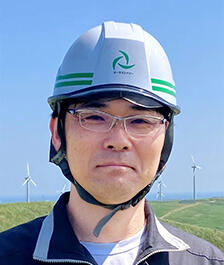
Head of Soya Office
Management Office 1, Wind Power Plant Operation-Japan Eurus Technical Service Corporation
After starting Japan's first wind power generation project in Tomamae Town, Eurus Energy has been developing projects in various locations. In the northern Hokkaido region, our projects are expanding progressively as the power transmission business, which has been a long-standing challenge, was realized.
The machine room of wind power generation facilities we service is at a height equivalent to the 20th floor of an apartment building, and our workers climb to that height to inspect and replace parts. We often face many difficulties in the harsh natural environment, such as heavy snowstorms and temperatures nearing -20°C.
From now on, wind power plants will be put into operation one by one, and the number of wind power generation facilities will continue to increase. We will strive for safe operations of power plants and promote clean energy business that makes local residents feel secure in our operations.




